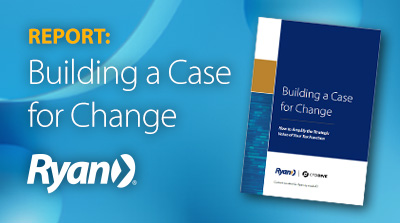Guide: How to Turn Your Tax Function into a Strategic Profit Centre
|
Many tax department heads and CFOs believe their organisations’ tax function needs to become more efficient and well-integrated with their business. However, a recent survey of senior tax and finance executives in Europe unveiled an area of significant disagreement: 80% of tax executives believe that the tax function is not viewed by their companies as a source of strategic value, compared to 14% of finance executives. The survey conducted by Industry Dive, a top business journalism company, in conjunction with Ryan, shows a disconnect between tax and finance decision-makers in how they view the role of the tax department. Most tax professionals want to operate on a strategic level, and tax leaders have confidence in their department’s ability. However, their time is often taken up by the need to carry out day-to-day, integral tax function tasks, such as audit, compliance, and data management services. They have the potential to operate at a high-value, strategic level, but lack the bandwidth to do so within their current infrastructure. How can the tax practitioner turn strategic potential into reality and ensure that the tax department has an organisation-wide impact on efficiency, effectiveness, and profit? Data Quality and Transparency Is EssentialAs a first step, the tax head needs to understand and develop relationships with other departments in the company, getting to know their people, processes, and systems. The key is to involve every department in big tax projects from the early stages. Doing this will enable tax practitioners to identify and fix any gaps in the company’s VAT ecosystem that can emerge in other departments because they are driven by other motivations, often overlooking tax implications until it is too late. Another critical area for unlocking the strategic potential of the tax function is data quality and transparency. Tax authorities require companies to report complex transactional business data for VAT compliance; however, this inconvenience is also a strategic opportunity for the organisation with transactional VAT data becoming powerful operational business data. For the data to be used strategically, it has to be correct at its origin. This means the tax department must be proactive, understanding what others in the organisation do—even beyond finance—and truly sensitise their processes to capture accurate VAT data at the source. The IT department should also be involved to incorporate existing organisation tools into the tax department where those tools can be mutually beneficial. Crucially, tax leaders must choose the right technology to best leverage the vast amounts of data they accumulate, in real time. Collaboration with Decision-Makers Is Key“Even beyond working more strategically, tax heads need to foster better alignment between themselves and the CFOs and other company executives,” says Ben Knock, Managing Director and Vice President of VAT Compliance, Consulting and Reclaim at Ryan. “Tax heads and CFOs both need to understand the changing tax landscape and why their companies need to be prepared for those changes.” “Often, the people in the tax team are having to be reactive to these changes, so helping the C-suite understand what’s coming up, what the implications are, and what they can do to make sure their systems are ready for the changes is really important,” Knock says. Tax and finance leaders also need to be on the same page in their understanding of the importance of applying efficient processes and updated technology to tax compliance, audits, and data management. If a company’s tax professionals are mired in inefficient processes, they won’t have the time for high-level strategic work. Invest Resources WiselyOutsourcing can help tax departments perform more strategically. Bringing in the expertise of a best-in-class tax partner to act as an extension of your team can free up the company tax team from carrying out manual and time-consuming tasks for higher value-added work. A tax transformation partner can also assist with maximising indirect tax recovery and minimising costs, locating efficiency drains, defining areas for automation of repetitive tasks, and future technology requirements, while helping to create a tax centre of excellence.
To turn their departments into strategic profit centres, tax leaders need to understand and be involved from the beginning in the large projects of other company departments that have tax implications, focus on data quality and transparency, foster a better alignment with CFOs, and consider outsourcing assistance from a tax transformation partner. Only then will the tax function’s perception of itself—as a source of strategic value—become reality. To learn more about the perceptions of tax and finance executives across Europe in our recent survey, download our report “Building a Case for Change – How to Amplify the Strategic Value of Your Tax Function” now. |


